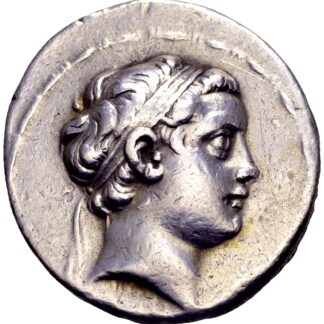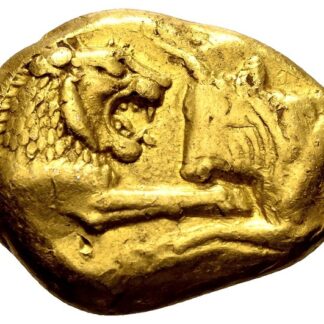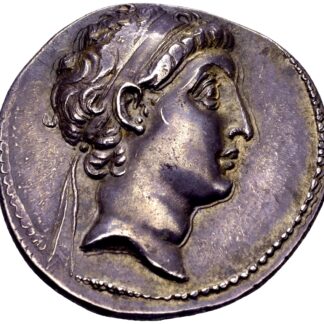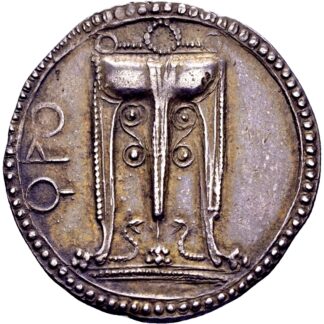Description
Circa 530-500 BC. AR nomos, 8.23 gr., 27 mm.
Obv: tripod, legs surmounted by wreaths and terminating in lion’s feet, two serpents rising inward from feet, set on base of three lines, the centre scrolled and dotted; in left field upwards: ϘPO; border of dots.
Rev: incuse tripod as obverse, but no serpents, dots or scrolling; incuse border of dots.
Ref: Gorini 1; Attianese 4; HN Italy 2075; SNG ANS 238–41; Boston MFA 176; Jameson 417; Kraay & Hirmer 264. From the European Connaisseur collection before 2002.
Deep iridescent tone. Very rare this sharp and complete. Superb Extremely Fine
From the Olga H. Knoepke collection. Ex Glendining’s, London December 10 1986.
In the 6th century BC a number of cities of Magna Graecia developed a unique minting process: the Incuse technique. Here the reverse is a deepened negative of the obverse. This is a very complicated technique and that it was invented in the 6th century BC still baffles numismatists today. This nomos of Kroton dates back to the last quarter of the 6th century when Pythagoras was living there. The great philosopher and mathematician had moved there around 530 BC and founded his philosophic school there, which soon dominated the political life of the city. One theory trying to explain the use of the incuse technique for coins is Pythagoras’ Tables of Opposites, a set of basic principles characteristic for the Pythagorean School. This theory holds 10 pairs of contrary qualities, a western version of the YinYang theory, so you will. Hence the obverse and incuse reverse.






